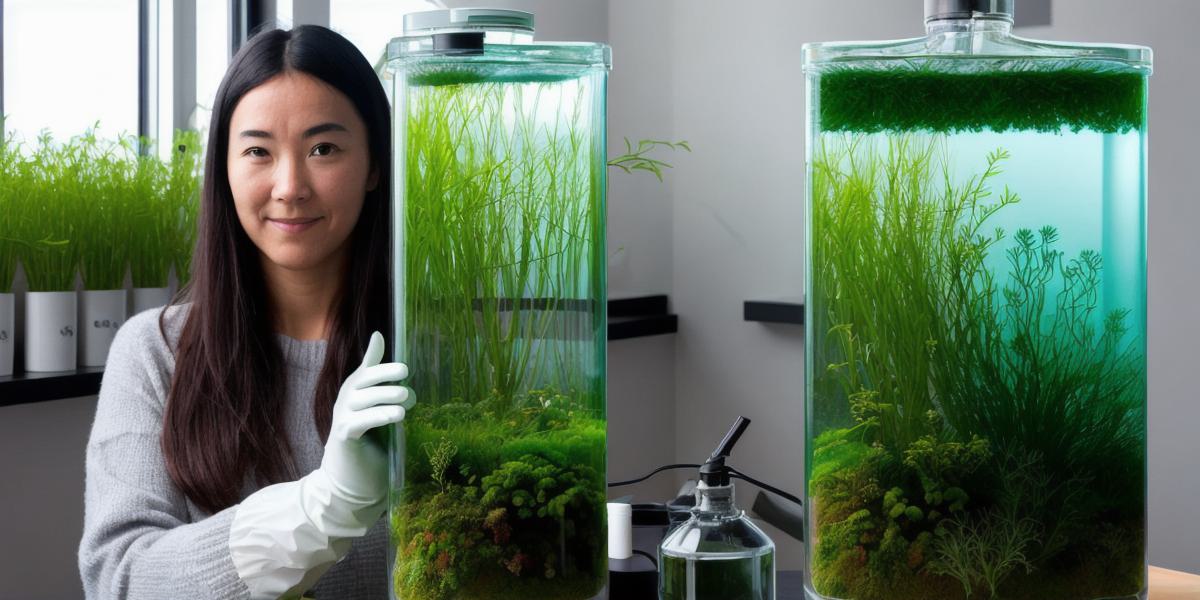Culturing Phytoplankton: A Guide for Growing and Maintaining a Healthy Ocean Ecosystem
Introduction
Phytoplankton are microscopic organisms that play a crucial role in marine ecosystems, serving as the primary producers of energy for larger aquatic life. However, phytoplankton populations have been declining due to pollution and climate change. In this article, we will discuss how to culture phytoplankton and maintain a healthy ocean ecosystem.
What is Phytoplankton?
Phytoplankton are photosynthetic organisms that live in the surface waters of oceans and freshwater bodies. They are responsible for producing half of the world’s primary production, which supports the entire marine food chain.
Why Culture Phytoplankton?
Culturing phytoplankton can help to restore depleted populations and improve overall water quality. It also provides a sustainable source of food for larger aquatic life, such as fish and seaweed. Additionally, by growing phytoplankton in controlled environments, scientists can study their behavior and interactions with other marine organisms.
How to Culture Phytoplankton
Culturing phytoplankton requires a controlled environment that mimics the conditions of the natural ocean. This includes maintaining the right temperature, light levels, and nutrient concentrations.
Here are the steps to culture phytoplankton:
- Choose the right species of phytoplankton for your specific needs. There are many different species, each with its own unique characteristics and requirements.
- Prepare a suitable growth medium by mixing seawater with nutrients such as nitrogen, phosphorus, and iron.
- Inoculate the growth medium with a small amount of live phytoplankton cells or use a commercial phytoplankton culture.
- Maintain the temperature between 15-25°C (59-77°F) and provide adequate light levels by using fluorescent lights or natural sunlight.
- Monitor the pH, dissolved oxygen, and other parameters to ensure optimal growth conditions.
- Harvest the phytoplankton cells when they reach the desired density or size.
Maintaining a Healthy Ocean Ecosystem
Culturing phytoplankton is just one part of maintaining a healthy ocean ecosystem. Here are some additional tips to help protect and preserve our oceans:
- Reduce pollution by using eco-friendly cleaning products and properly disposing of waste.
- Support sustainable fishing practices and reduce overfishing.
- Reduce carbon emissions and promote renewable energy sources to combat climate change.
- Protect marine habitats and restore damaged ecosystems through conservation efforts.
- Educate others about the importance of ocean health and encourage them to take action.
Conclusion
Culturing phytoplankton is a valuable tool for restoring and maintaining healthy ocean ecosystems. By following these steps, we can ensure that our oceans continue to provide food and habitat for aquatic life while also supporting human well-being. As the famous marine biologist Rachel Carson once said, "The sea is the great unspoiled wilderness, a free and open space." Let’s work together to keep it that way.
FAQs
Q: What are some common phytoplankton species?
A: Some common phytoplankton species include diatoms, dinoflagellates, and coccolithophores.
Q: How long does it take to grow phytoplankton?
A: Growth rates can vary depending on the species and conditions, but it typically takes 1-2 weeks for phytoplankton to reach significant densities.
Q: What are the risks associated with culturing phytoplankton in large-scale commercial operations?
A: There is a risk of introducing non-native phytoplankton species into the environment, which can outcompete native populations and cause ecological disruption. It’s important to carefully monitor and manage commercial phytoplankton cultures to minimize these risks.
